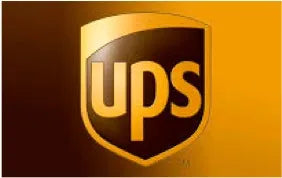Private labeling is a popular option for businesses looking to create and sell their own branded products without the hassle of sourcing and producing them from scratch. By private labeling, businesses can take advantage of existing products, packaging, and manufacturing processes to bring their own unique products to market. In this blog post, we will explore 10 different methods for private labeling products, including screen printing, digital printing, embroidery, heat transfer printing, laser engraving, sublimation printing, vinyl cutting, pad printing, direct-to-garment printing, and dye sublimation. We will discuss the benefits and drawbacks of each method, as well as the approximate cost and types of products that are suitable for each method. Whether you are just starting out in private labeling or looking to expand your product line, this blog post will provide valuable insights and tips to help you succeed.
10 different methods for private labeling products:
1、Screen printing:
Screen printing is a method of printing designs onto a substrate using screens and ink. This method is often used for printing onto items such as t-shirts, bags, and other textiles. Screen printing allows for a wide range of design options and produces a high-quality, durable finish. Approximate cost: $0.50-$5.00 per print, depending on the quantity and complexity of the design. Suitable for: T-shirts, bags, hats, and other textiles.
2、Digital printing:
Digital printing is a process that uses specialized printers to apply ink or other printing medium directly to a substrate. This method is often used for printing smaller quantities of products or for creating customized or personalized products. Digital printing allows for a high level of detail and color accuracy, and it is generally faster and more cost-effective than traditional printing methods. Approximate cost: $0.50-$3.00 per print, depending on the quantity and complexity of the design. Suitable for: Business cards, brochures, banners, and other promotional materials.
3、Embroidery:
Embroidery is a method of decorating fabric by sewing designs onto the surface using thread. This method is often used for creating branded apparel, such as hats, t-shirts, and jackets. Embroidery is a durable and high-quality option that can add a professional touch to your private label products. Approximate cost: $3.00-$12.00 per embroidery, depending on the size and complexity of the design. Suitable for: Hats, t-shirts, jackets, and other apparel.
4、Heat transfer printing:
Heat transfer printing is a method of printing designs onto a substrate using heat and pressure. This method is often used for printing onto items such as t-shirts, bags, and other textiles. Heat transfer printing allows for a wide range of design options and is generally faster and more cost-effective than other printing methods. Approximate cost: $0.50-$3.00 per print, depending on the quantity and complexity of the design. Suitable for: T-shirts, bags, and other textiles.
5、Laser engraving:
Laser engraving is a method of marking or etching a design onto a substrate using a laser beam. This method is often used for creating personalized or customized products, such as engraved jewelry or promotional items. Laser engraving produces a high-quality and durable finish and is generally faster and more cost-effective than other engraving methods. Approximate cost: $0.50-$5.00 per engraving, depending on the size and complexity of the design. Suitable for: Jewelry, promotional items, and other small products.
6、Sublimation printing:
Sublimation printing is a method of printing designs onto a substrate using heat and pressure. This method is often used for printing onto items such as mugs, phone cases, and other hard surfaces. Sublimation printing allows for a wide range of design options and produces a high-quality, durable finish. Approximate cost: $1.00-$3.00 per print, depending on the quantity and complexity of the design. Suitable for: Mugs, phone cases, and other hard surfaces.
7、Vinyl cutting:
Vinyl cutting is a method of creating custom designs or logos using a computer-controlled cutting machine. This method is often used for creating custom decals, stickers, and other promotional items. Vinyl cutting allows for a wide range of design options and is generally fast and cost-effective. Approximate cost: $0.50-$2.00 per cut, depending on the size and complexity of the design. Suitable for: Decals, stickers, and other promotional items.
8、Pad printing:
Pad printing is a method of printing designs onto a substrate using a silicone pad and ink. This method is often used for printing onto items with uneven or irregular surfaces, such as golf balls or toys. Pad printing allows for a high level of detail and is generally fast and cost-effective. Approximate cost: $0.50-$3.00 per print, depending on the quantity and complexity of the design. Suitable for: Golf balls, toys, and other irregularly shaped products.
9、Direct-to-garment printing:
Direct-to-garment (DTG) printing is a method of printing designs directly onto fabric using specialized printers and ink. This method is often used for printing small quantities of customized or personalized items, such as t-shirts or hoodies. DTG printing allows for a wide range of design options and produces a high-quality finish. Approximate cost: $3.00-$12.00 per print, depending on the quantity and complexity of the design. Suitable for: T-shirts, hoodies, and other apparel.
10、Dye sublimation:
Dye sublimation is a method of printing designs onto a substrate using heat and pressure. This method is often used for printing onto items such as mugs, phone cases, and other hard surfaces. Dye sublimation allows for a wide range of design options and produces a high-quality, durable finish. Unlike traditional sublimation printing, which uses special inks and paper, dye sublimation uses dyes that are infused directly into the substrate. Approximate cost: $1.00-$3.00 per print, depending on the quantity and complexity of the design. Suitable for: Mugs, phone cases, and other hard surfaces.
Conclusion:
In this blog, we have explored 10 different methods for private labeling products. Each method has its own unique benefits and drawbacks, and the best method for your business will depend on your specific needs and goals. By carefully considering the cost, quality, and suitability of each method, you can choose the best option for your business and succeed in private labeling. Whether you are just starting out in private labeling or looking to expand your product line, these methods provide valuable options for creating and marketing your own branded products. As always, it is important to do your research and due diligence when private labeling to ensure that you are producing high-quality products that meet your customers' needs and expectations. With the right approach and a little bit of effort, private labeling can be a lucrative and rewarding venture for any business.
If you need our help, feel free to contact us!













0 comments